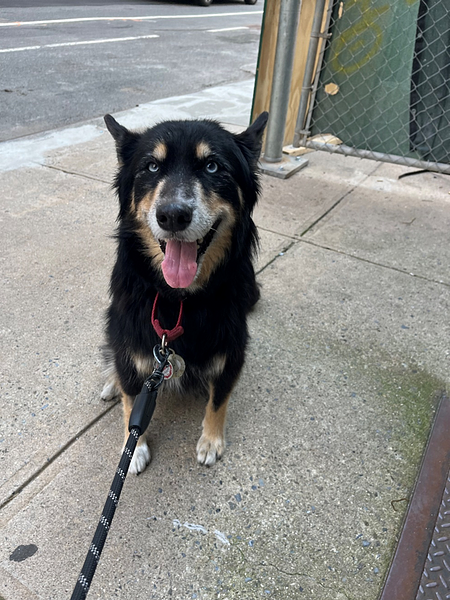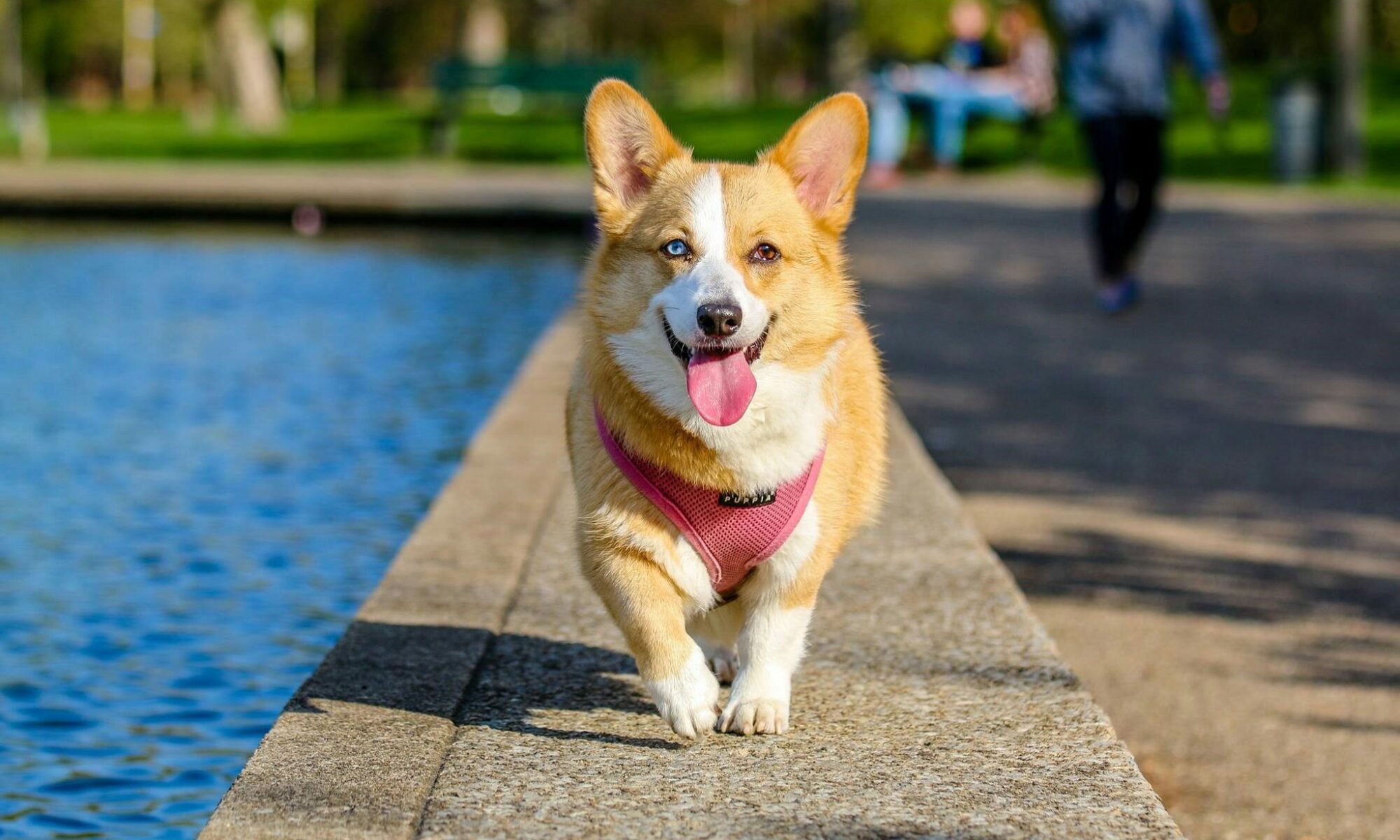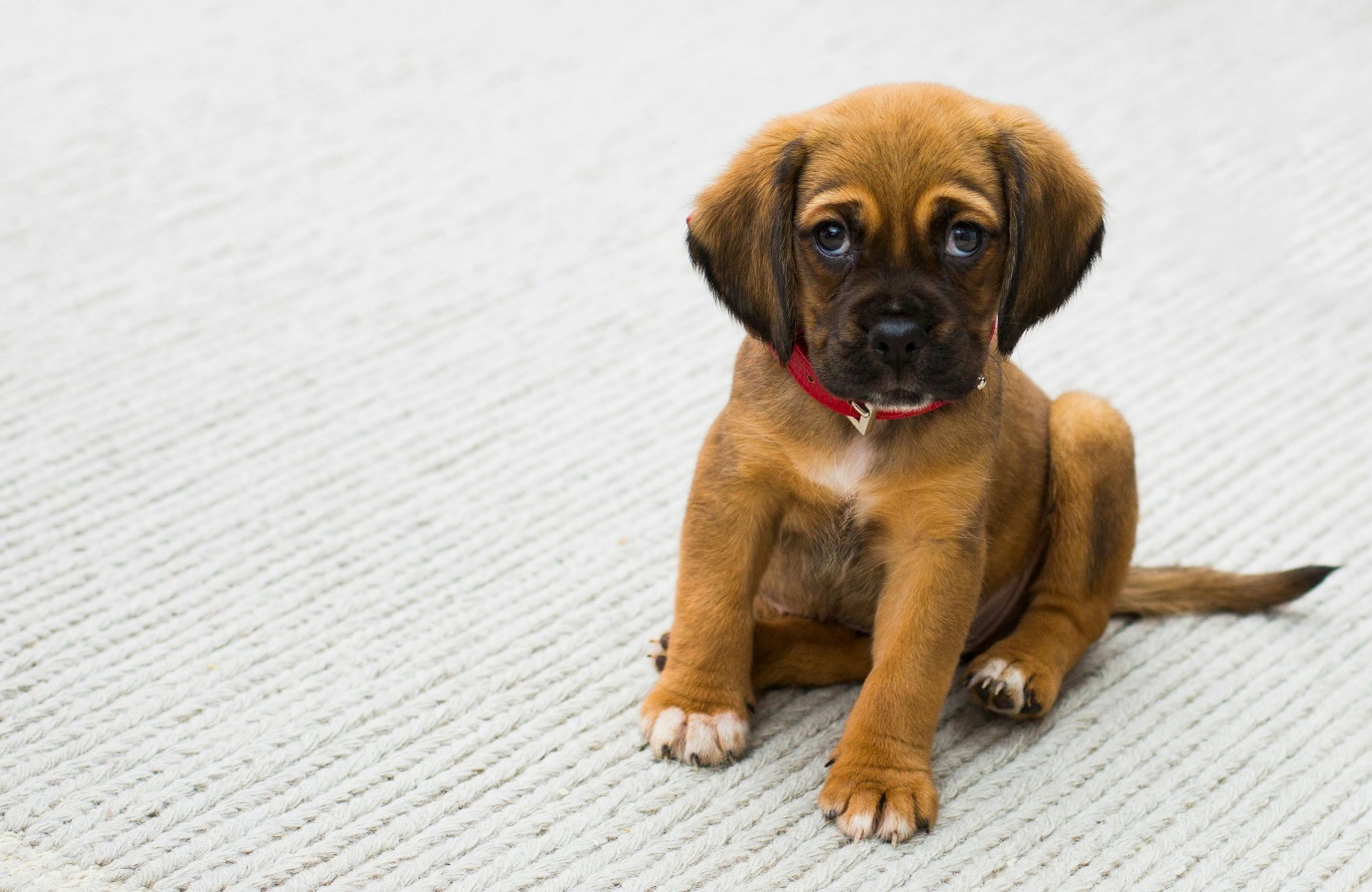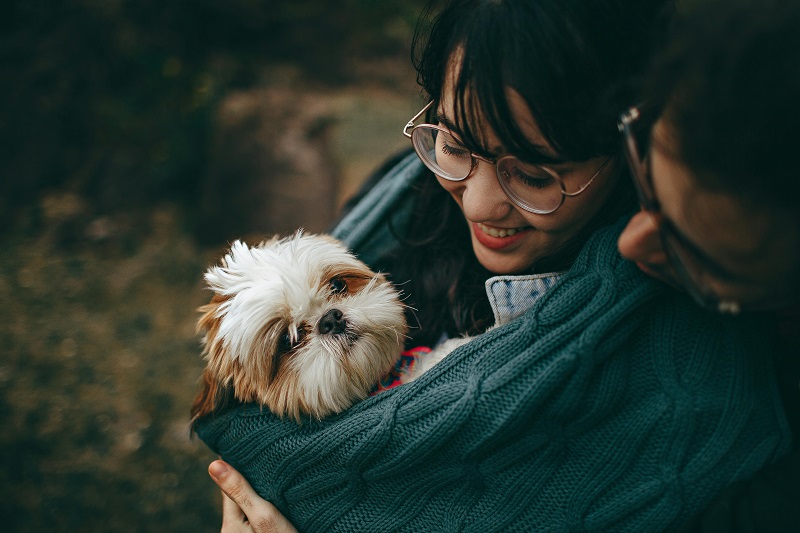Candles are a common fixture in many homes, providing ambiance, fragrance, and sometimes even light. However, these decorative items can pose significant risks to dogs.
Key Takeaway: This article explores the potential dangers that candles can pose for dogs and discusses essential safety measures that dog owners should take.
As responsible pet owners, it’s crucial to create a safe environment for our furry friends by being aware of household items that may be harmful to them. Candles, although they may seem harmless, can actually bring about several hazards such as toxic ingredients, harmful essential oils, and fire risks. By understanding these dangers, we can take the necessary steps to ensure the safety and well-being of our dogs.
Understanding the Harmful Effects of Candles on Dogs
- Paraffin Wax: A Common but Hazardous Ingredient
What is paraffin wax and how is it used in candles?
Paraffin wax is a byproduct of petroleum, coal, or oil shale. It is a popular ingredient in many commercially available candles due to its affordability and ease of use. When solidified, paraffin wax has a smooth texture and excellent burn characteristics, making it an attractive choice for candle manufacturers.
Harmful substances released when paraffin wax is burned
When paraffin wax candles are lit, they release a variety of potentially harmful substances into the air. Among these are benzene and toluene, both of which are known carcinogens. These substances can pose significant health risks not only to humans but also to pets, particularly dogs.
Negative impact on a dog’s health
Dogs have a sensitive respiratory system that can be adversely affected by the inhalation of toxic fumes. Exposure to benzene and other harmful chemicals released from burning paraffin wax can lead to symptoms such as:
- Persistent coughing and sneezing
- Respiratory distress
- Lethargy
- Irritation of the eyes and nose
Studies and cases of toxicity symptoms in dogs
There have been documented cases where dogs exhibited signs of toxicity after being exposed to paraffin wax candles. For instance, one study noted that dogs living in homes with frequent use of paraffin-based candles showed elevated levels of respiratory issues compared to those in homes without such exposure.
In another case, a dog exhibited severe lethargy and respiratory distress after prolonged exposure to burning paraffin candles. Upon veterinary examination, it was determined that the dog’s symptoms were directly linked to the inhalation of harmful substances released by these candles.
Understanding these risks underscores the importance of choosing safer alternatives for your home environment, particularly if you have pets.
- The Dangers of Essential Oils in Scented Candles for Dogs
Common scented candles often contain essential oils that can be toxic to dogs. These oils are used to provide fragrance but pose significant risks to canine health. Essential oils such as citrus, eucalyptus, and tea tree oil are particularly harmful.
Types of Essential Oils That Are Harmful to Dogs
- Citrus Oils
Often found in lemon or orange-scented candles, these oils can cause vomiting, diarrhea, and even depression in dogs.
- Eucalyptus Oil
Known for its strong scent, eucalyptus can lead to respiratory issues and lethargy.
- Tea Tree Oil
Extremely toxic to dogs, this oil can cause severe symptoms like muscle tremors, weakness, and skin irritation.
Inhaling the high concentration of essential oils from scented candles is especially dangerous for dogs. Their respiratory systems are more sensitive than humans’, making them more susceptible to irritation and toxicity. Ingestion is another risk; curious dogs might lick or chew on candles, leading to gastrointestinal distress or more severe poisoning.
Skin contact with these essential oils can also trigger adverse reactions. If a dog’s skin absorbs the oil, it may experience itching, redness, or other dermatological issues.
Symptoms of essential oil poisoning in dogs include:
- Vomiting
- Diarrhea
- Persistent coughing or sneezing
- Lethargy
- Loss of appetite
- Muscle tremors
- Skin irritation
These symptoms should not be ignored. Immediate veterinary care is crucial if you suspect your dog has been exposed to toxic essential oils from candles.
Creating a dog-safe environment involves understanding these risks and taking appropriate measures. Always check the ingredients of any scented candle and avoid those containing harmful essential oils.
- The Risk of Burns and Fire Accidents: Dog Behavior Around Candles
Dogs are naturally curious, often exploring their environment with their noses and paws. This inquisitive behavior puts them at a higher risk of burns from candles. When a dog sniffs or investigates a lit candle, their fur or whiskers can easily catch fire, leading to severe injuries.
Potential Risks:
- Burns: Dogs may knock over candles, causing hot wax to spill onto their skin or fur. Paraffin wax, commonly used in candles, can cause painful burns when it comes into contact with a dog’s skin.
- Fire Hazards: Unattended candles pose significant fire hazards if knocked over by a curious pet. This risk is compounded if the candle contains paraffin wax or other flammable materials.
- Inhalation of Harmful Substances: Burning paraffin wax releases harmful substances like benzene and toluene. These toxic chemicals are especially dangerous for dogs when inhaled, potentially leading to respiratory issues.
Behavioral Concerns:
- Anxiety and Stress: The flickering flame of a candle can cause anxiety in some dogs. The strong scents from candles containing essential oils might also trigger stress, leading to adverse reactions such as respiratory distress or behavioral changes.
- Curiosity: Dogs often investigate new objects in their environment. A recently extinguished candle might still be hot or contain residual harmful substances that dogs could ingest or inhale.
Preventative Measures:
- Supervision: Always supervise your dog around lit candles to prevent accidents.
- Placement: Keep candles out of reach of pets. High shelves or enclosed holders can reduce the risk of burns and fire hazards.
- Safer Alternatives: Opt for flameless LED candles to eliminate the risk of burns and fire.
Understanding these risks allows you to create a safer environment for your furry friend, minimizing potential dangers associated with traditional candles.
Preventing Candle-Related Incidents Involving Dogs
- Choosing Safer Alternatives: Dog-Safe Candle Options
When it comes to ensuring the safety of your canine companion, selecting the right type of candles plays a crucial role. Opting for dog-safe candles is an essential step in creating a pet-friendly home environment.
Recommendation to opt for unscented candles:
- Unscented candles are less likely to contain high levels of toxic substances like essential oils.
- Without strong aromas, these candles reduce the risk of respiratory distress or other health issues in dogs.
Candles made from natural and dog-friendly materials:
- Soy wax candles: These produce less soot compared to paraffin wax and generally burn cleaner, reducing the risk of inhaling harmful substances.
- Beeswax candles: Known for their natural, pleasant scent and cleaner burn, beeswax candles are another excellent choice. They are less likely to cause adverse reactions in dogs.
Benefits of Choosing Soy Wax and Beeswax Candles:
- Reduced soot production: Both soy wax and beeswax emit minimal soot, leading to a cleaner indoor air quality.
- Lower toxicity risk: These materials do not release harmful chemicals like benzene or toluene when burned.
- Natural aroma: Beeswax naturally smells pleasant without added fragrances, making it a safer option for dogs with sensitive respiratory systems.
Additional Tips for Using Dog-Safe Candles:
Placement considerations:
- Always place candles out of reach of your pets. Elevated surfaces or enclosed holders can help prevent accidental contact.
Supervision is key:
- Never leave lit candles unattended, especially if you have a curious dog that might knock them over or get too close.
By taking these steps, you can enjoy the ambiance and warmth that candles provide while ensuring your dog’s safety. Transitioning into safer candle choices creates a more secure environment for both you and your furry friend.
- Placing Candles in Secure Locations: Out of Sight, Out of Reach
It’s important to keep candles away from your dog to ensure their safety. Dogs are naturally curious and may accidentally knock over lit candles, which can result in burns or even start a fire. Here are some practical tips to help you create a safe environment for your furry friend while still being able to enjoy the cozy atmosphere that candles bring:
Tips for Keeping Candles Away from Your Dog:
- High Shelves: Place your dog-safe candles on high shelves where your dog cannot reach them. Make sure these shelves are strong and stable so they don’t tip over easily.
- Enclosed Candle Holders: Use candle holders that completely enclose the flame. This not only reduces the chances of your dog getting too close to the fire but also minimizes the amount of harmful substances being released into the air.
- Secure Rooms: Consider lighting candles in rooms that are off-limits to your dog. This can be especially helpful when you want to create a peaceful atmosphere without having to constantly watch over your pet.
Safer Alternatives for Creating a Cozy Atmosphere:
- Flameless LED Candles: These are great alternatives to real candles as they mimic the flickering effect without any risk of fire. They come in various styles and sizes, making them suitable for any type of decor.
- Diffusers with Pet-Safe Essential Oils: If you enjoy scented candles, opt for diffusers that use essential oils which are safe for pets. Be sure to do your research and choose oils that won’t harm your dog’s health.
Choosing unscented candles made from natural materials like soy wax or beeswax can also help lower the risks associated with traditional candles. These options tend to produce less soot and contain fewer potentially harmful substances, making them a safer choice overall.
Remember, it’s always better to prioritize your dog’s safety over aesthetics. With these strategies in place, you can create a warm and inviting atmosphere in your home while ensuring that your dog stays protected.
Recognizing and Responding to Candle-Related Injuries in Dogs
Dogs can be highly susceptible to the harmful effects of candles, especially when they ingest, inhale, or come into direct skin contact with toxic substances. Recognizing the symptoms early is crucial for prompt veterinary care.
Common Symptoms of Candle Exposure in Dogs
Ingestion Symptoms
If a dog ingests wax, essential oils, or other candle ingredients, common symptoms may include:
- Vomiting and Diarrhea: These are often the first signs of ingestion-related toxicity.
- Loss of Appetite: A sudden lack of interest in food could indicate internal discomfort.
- Lethargy: An unusual level of tiredness or weakness is often a red flag.
- Abdominal Pain: Dogs may exhibit discomfort by whining or avoiding touch around their stomach area.
Inhalation Symptoms
Inhaling harmful substances from burning candles can cause respiratory distress. Look out for:
- Persistent Coughing and Sneezing: Continuous efforts to clear the respiratory tract.
- Difficulty Breathing: Labored or rapid breathing can be a serious symptom indicating severe irritation.
- Nasal Discharge: Unusual discharge from the nose might suggest irritation or infection.
- Wheezing: This high-pitched sound during breathing points to airway constriction.
Dermal Contact Symptoms
Direct skin contact with candle substances, especially those containing toxic essential oils, can result in:
- Redness and Irritation: Noticeable inflammation on the skin where contact occurred.
- Itching and Scratching: Excessive scratching at specific areas might indicate irritation.
- Blisters or Burns: In severe cases, physical burns or blisters can develop on the skin.
Immediate Actions to Take
Recognizing symptoms is only part of the solution. Knowing how to respond effectively can make a significant difference in your dog’s recovery.
For Ingestion
- Remove Access: Ensure your dog cannot consume any more candle material.
- Do Not Induce Vomiting Without Advice: Consult your veterinarian before attempting to induce vomiting as it may cause more harm.
- Seek Veterinary Care Immediately: Time is critical; bring your dog to a vet as soon as possible for evaluation and treatment.
For Inhalation
- Move to Fresh Air: Immediately move your dog away from the candle fumes into an area with clean air.
- Monitor Breathing: Keep a close eye on any changes in breathing patterns.
- Contact Your Veterinarian: Explain the situation and follow their guidance promptly.
For Dermal Contact
- Rinse Affected Area: Use lukewarm water to gently rinse off any residual substance from your dog’s skin.
- Avoid Harsh Soaps: Using mild pet-safe soap will help prevent further irritation.
- Consult Your Veterinarian: If symptoms persist, seek professional advice for appropriate treatments such as topical ointments.
When to Seek Veterinary Care
Understanding when to seek veterinary care is vital. Immediate professional intervention is recommended if:
- Symptoms persist beyond a few hours despite initial home care steps.
- Your dog exhibits severe symptoms such as difficulty breathing, continuous vomiting, or unresponsiveness.
- There is any doubt about the severity of exposure or if multiple symptoms appear simultaneously.
Candles can pose various risks to dogs through ingestion, inhalation, and dermal contact. Recognizing symptoms quickly and taking appropriate actions can prevent serious health issues. Always consult with a veterinarian if you suspect your dog has been exposed to harmful substances from candles.
What to Do If Your Dog is Affected: Steps to Take Before Veterinary Help Arrives
Recognizing the symptoms of candle exposure in dogs and taking immediate action can make a significant difference. Here are essential steps you should follow if your dog shows signs of harm from candles:
- Assess the Situation
- Ingestion: If your dog has ingested candle wax or toxic substances, look for symptoms such as vomiting, diarrhea, or lack of appetite.
- Inhalation: Symptoms like coughing, sneezing, or difficulty breathing may indicate smoke inhalation.
- Dermal Contact: Redness, swelling, or irritation on the skin suggests direct contact with toxic oils or hot wax.
- Immediate First Aid Measures
- Remove Candle Residue: Carefully remove any remaining candle residue from your dog’s fur or paws using a damp cloth. Avoid using harsh chemicals that could worsen the irritation.
- Ensure Fresh Air: If your dog has inhaled smoke, move them to an area with clean air. Open windows and doors to ventilate the space.
- Rinse Affected Areas: For dermal contact with essential oils or hot wax, rinse the affected area with cool water to soothe irritation and prevent further absorption.
- Monitor Symptoms
Keep a close eye on your dog’s behavior and physical condition. Track any changes in their symptoms and take notes to provide detailed information to your veterinarian.
- Contact Your Veterinarian
Even if you have provided first aid, it’s crucial to seek professional medical attention. Describe the symptoms and actions taken to your vet for an accurate assessment.
- Follow Emergency Guidelines
If your dog shows severe symptoms such as difficulty breathing, persistent vomiting, or signs of shock, follow emergency guidelines:
- Stay calm and keep your dog as relaxed as possible.
- Transport them safely to the nearest veterinary clinic without delay.
Taking these steps promptly can help mitigate the effects of harmful exposure until professional care is available. Prioritizing safety and being prepared for emergencies ensures better outcomes for your furry friend.
The Role of a Veterinarian: Diagnosis and Treatment for Candle-Related Injuries
Recognizing the signs that your dog may have been harmed by candles is crucial. Symptoms can vary widely depending on the type of exposure—whether it’s ingestion, inhalation, or dermal contact. Some common indicators include:
- Vomiting and diarrhea
- Persistent coughing and sneezing
- Lameness or paralysis
- Depression and loss of appetite
- Hypothermia
Even if your pet’s symptoms appear mild at first, seeking veterinary care immediately is essential. Candle-related injuries can have delayed or long-term effects on a dog’s health that may not be apparent without proper medical evaluation. A veterinarian will conduct a thorough examination to diagnose the extent of the damage and recommend appropriate treatment.
Potential complications can arise if candle exposures in dogs are not promptly addressed:
- Respiratory Issues: Inhalation of soot or toxic substances can lead to respiratory distress or long-term lung damage.
- Gastrointestinal Problems: Ingesting harmful substances like paraffin wax or toxic essential oils may cause severe gastrointestinal upset or even poisoning.
- Dermal Reactions: Contact with toxic essential oils can result in skin irritation or allergic reactions.
During the veterinary visit, the following steps may be taken:
- Diagnostic Tests: Blood tests and imaging studies to assess internal organ function and identify any hidden complications.
- Symptomatic Treatment: Administration of medications to alleviate immediate symptoms such as anti-nausea drugs for vomiting or bronchodilators for respiratory issues.
- Supportive Care: IV fluids to maintain hydration and support organ function.
Follow-up care is often recommended to monitor recovery and address any potential long-term effects. Your veterinarian may schedule additional visits or suggest home care routines to ensure your dog fully recovers from its candle-related injuries.
Understanding these risks underscores the importance of creating a safe environment for your pets by carefully selecting household items that pose no threat to their health.
Creating a Safe Environment for Your Dog: Beyond Candles
As a responsible dog owner, it’s important to be proactive in identifying and addressing any potential dangers that could harm your furry friend. While it’s common knowledge that candles can pose a hazard to dogs, there are other safety measures you should also take into consideration.
General Home Safety Tips for Dog Owners
Here are some general tips to help you make your home safe and secure for your dog:
- Keep Toxic Substances Out of Reach
Many household items can be toxic to dogs, including cleaning supplies, medications, and certain foods. Store these items in cabinets or on high shelves where your dog cannot access them.
- Secure Loose Wires and Cords
Dogs, especially puppies, love to chew on things. Loose wires and cords not only create a mess but also pose a choking hazard and an electrocution risk. Use cord organizers or cover them with protective tubing to keep them out of reach.
- Use Baby Gates to Restrict Access
Baby gates are an excellent way to keep dogs out of areas that may not be safe for them, such as kitchens or staircases. Make sure the gates are sturdy and properly installed to prevent your dog from knocking them over.
- Properly Dispose of Trash
Dogs are often tempted by the smells coming from trash bins. Secure your trash cans with lids or store them in a closet to prevent your dog from accessing potentially harmful items such as food scraps, bones, and packaging materials.
- Lock Away Dangerous Items
Items like sharp tools, heavy objects, and small choking hazards should be stored in locked cabinets or drawers. This prevents curious dogs from getting into things they shouldn’t.
- Check Plants for Toxicity
Some common household plants can be toxic to dogs if ingested. Research the plants you have at home and ensure they are safe for pets. If not, consider replacing them with non-toxic alternatives.
- Cover Electrical Outlets
Just like with children, it’s wise to cover electrical outlets that are within reach of your dog. This prevents any accidental shocks if they try to sniff or lick the outlet.
- Secure Windows and Balconies
Ensure windows have screens and balconies have proper railings to prevent accidental falls. Dogs may get excited by something outside and attempt to jump through open windows or off balconies.
Creating a safe environment for your dog means considering all aspects of home safety. Regularly inspect your living space for potential hazards and make necessary adjustments to ensure your pet’s well-being.
Conclusion
Candles and Dogs: A Cautionary Relationship
Ensuring a safe environment for your dog means being cautious with household items like candles. Those scented with essential oils or made from paraffin wax can pose significant health risks. Yet, this doesn’t mean you have to forego the cozy ambiance they provide.
Consider these safer alternatives:
- Unscented Candles: These have fewer toxic substances.
- Natural Materials: Opt for soy wax or beeswax candles which produce less soot and are less likely to cause adverse reactions in dogs.
Understanding the potential risks of candles and implementing the recommended safety measures allows you to enjoy their benefits without compromising your dog’s well-being.
FAQs (Frequently Asked Questions)
Paraffin wax is a common ingredient used in candles to create the wax base. It is derived from petroleum, and its low cost and easy availability make it a popular choice for candle production.
Certain components of candles, such as paraffin wax and essential oils, can be dangerous for dogs due to the release of potentially harmful substances when the candles are burned. In addition, dogs may be at risk of ingestion, inhalation, dermal contact, burns, and fire accidents related to candles.
Common symptoms of exposure to toxic substances from candles in dogs include vomiting, diarrhea, coughing, difficulty breathing, skin irritation, lethargy, and neurological symptoms. The specific symptoms can vary depending on the type of exposure (e.g., ingestion vs. inhalation).
Safer alternatives to traditional scented candles for dog owners include opting for unscented candles and choosing candles made from natural and dog-friendly materials such as soy wax or beeswax. These options tend to produce less soot and have a lower risk of causing adverse reactions in dogs when burned.
Dog owners can prevent candle-related incidents involving their pets by choosing safer alternatives like unscented or dog-safe candles, placing candles in secure locations that are out of reach for dogs, and using alternative methods for creating a cozy atmosphere in the home, such as flameless LED candles or diffusers with pet-safe essential oils.
Dogs are particularly vulnerable to burns and fire accidents related to candles due to their curious nature and tendency to investigate their surroundings with their noses and paws. Additionally, anxiety or stress caused by candles (e.g., flickering flames, strong scents) may trigger adverse reactions in dogs, such as respiratory distress or behavioral changes.










